Summary, abstracts and full texts of issue no. 112
Philippe Mesnard (Editor in chief): Editorial: D'où viennent les images (pdf in French) (pdf in Dutch)
Portfolio / Auschwitz (pdf in French and Dutch)
Dossier: Les enfants de la Guerre d'Espagne. Expériences et représentations culturelles
Edited by Didier Corderot and Danielle Corrado
Didier Corderot (Blaise Pascal University – CHEC) and Danielle Corrado (Blaise-Pascal University – CELIS): Présentation (pdf in French)
Catherine Milkovitch-Rioux (CELIS, IHTP-CNRS): Enfances en guerre: expériences et représentations culturelles (pdf) [Childhood at war: experiences and cultural representations]
-
It is only a question of locating within the general frame of Childhood Violence Exile plan (EVE) the reflection about the Spanish Civil War children, particularly upon the issue of experiences and cultural representations : who are the children we talk about, how does the question of age intervene in the fields which are here taken into account ? How do the « cultural representations » allow the child to speak ? What are therefore the views and reading of the conflict ?We’ll have to distinguish the truly childish views such as the testimony of Encarnació Martorelli I Gil, An innocent look subtitled Diary of the Spanish Civil War [Un regard innocent. Journal de la guerre civile en Espagne, Metailié, 2011] and the retrospective sources such as memories, analyses what knowledge the intimate sources bring to the children at war, in the various phases of the writing. We’ll have to see what the child’s point of view, as far as literature is concerned, brings in terms of experience and the elements which are highlighted.It is only a question of locating within the general frame of Childhood Violence Exile plan (EVE) the reflection about the Spanish Civil War children, particularly upon the issue of experiences and cultural representations: who are the children we talk about, how does the question of age intervene in the fields which are here taken into account? How do the “cultural representations” allow the child to speak? What are therefore the views and reading of the conflict?
We’ll have to distinguish the truly childish views such as the testimony of Encarnació Martorelli I Gil, An innocent look subtitled Diary of the Spanish Civil War [Un regard innocent. Journal de la guerre civile en Espagne, Metailié, 2011] and the retrospective sources such as memories, analyses what knowledge the intimate sources bring to the children at war, in the various phases of the writing. We’ll have to see what the child’s point of view, as far as literature is concerned, brings in terms of experience and the elements which are highlighted.
Alicia Pozo-Gutiérrez (Southampton University) and Célia Keren (École des Hautes Études en Sciences Sociales (EHESS), Paris – École des Hautes Études Hispaniques et Ibériques (EHEHI), Casa de Velázquez, Madrid): Des cahiers d’enfants aux souvenirs de vieillesse: récits autobiographiques d’anciens enfants espagnols réfugiés, 1940-2006 (pdf)[From Children’s Notebooks to Old Age Recollections: Autobiographical Accounts of Former Spanish Refugee Children, 1940-2006]
- This article focuses on five former refugee children from the Spanish Civil War, who fled to France during the Retirada and were later on evacuated to the United States. At two points in their lives and in two very different contexts, they wrote the stories of their lives: first in 1940, as children, and a second time in the 2000s, in their old age. A close reading of these texts provide us with exceptional empirical data to reflect on the effects of context, passage of time and age on autobiographical writing. We will focus on two main questions: firstly, the relation between self-writing and the construction of individual identities; secondly, the relation between this individual identity and the collective memory of these refugees who went through exile together.
Danielle Corrado (Blaise Pascal University – CELIS) : Récits d’enfance et discours identitaires (pdf) [Childhood Narratives and Identity-related Discourse]
- This contribution presents a corpus of testimonies written by adults who experienced the Spanish civil war and its consequences during their childhood: Traumas – Niños de la guerra y del exilio, published in 2010 in Spain by a Catalan association for historic memories retrieval (AMHDBLL). The analysis of the editorial enunciation and of the narrative sets (text-pictures relationships, writing registers) allows to highlight the individual-collective dual frame of a production striving for a legitimization and a social recognition of the Republicans' children identity. Such a determination relies on a postulated silent and scattered memory which editorial efforts aim at making more visible and audible.
Ángela Cenarro Lagunas (Zaragoza University) : Mémoires de l’après-guerre : les enfants de l’Auxilio Social (pdf) [Post-war memories: the children of the Auxilio Social]
- When the Spanish civil war was over (1939), Auxilio Social became the main welfare institution of Franco’s regime. Controlled by the fascist party, the Falange, and submitted to the state, it offered a wide range of soup kitchens and orphanages during the first stage of the Francoist regime. Thousands of children, most of them belonging to the “vanquished” in the war, were assisted by a new class of social workers composed of falangists, priests and professionals – mainly doctors and schoolteachers. They were encouraged to provide a modern assistance, conceived as a mechanism to “regenerate” the needy, and only segregation, discipline and catholic re-education could transform them into suitable individuals, “servants of the fair Spain”. One of the main objectives of the Francoist welfare was to erode their previous identities and familiar links. Nevertheless, institutionalized children’s narratives and memories are a good example of their attempt to build an alternative identity to that one promoted by the regime. Although it was a fragmented identity, it became an instrument to resist the imposition of the monolithic discourse of the “victors”. This article aims to show to what extent the Francoist elite succeeded in their purposes as well as how this peculiar resistance to the dictatorship was crucial in the definition of the power relations between “victors” and “vanquished” in the postwar Spain.
Bénédicte Mathios (Blaise Pascal University – CELIS): Poétiques de la survie: trois poètes et une romancière regardent leur enfance en guerre (pdf) [Poetics of survival: three poets and a novelist look upon their childhood within war]
- Childhood within war is a paradoxical foundation for the four writers this paper deals with: Ángel González (1925-2008), José Ángel Valente (1929-2000), Antonio Gamoneda (1931), Rosa Regàs (1933). In their respective writings, as the adults decide to talk about a personal experience within a free space – the poem, the novel –, they deal with a violent rupture, a struggle for identity, a survival. Choosing this theme to show the emergence of the subject can’t be separated from an outset whose foundations are undermined by the violence of what they have seen, of what they have heard, of what they have lived through, by the prohibition of seeing, of hearing, of living, and by the forgetting. Thus, the writing develops itself within a confusion between childhood and the genesis of creation.
Karine Lapeyre (Paris IV University): Les Pionniers: l’avenir d’une société communiste (pdf) [Los pioneros: the future of a communist society]
- Spanish war specificity, civil and ideological, leads us to take a keen interest in children fate. Both sides used them for propaganda and at the same time they tried to indoctrinate them in order to establish an ideal society according to their respective criteria.
In the 30’s youth movements were very active throughout Europe. In Spain, they radicalized during the conflict to become the breeding ground of militants and soldiers. Some of these organizations believed it was important to gain them from their younger days whereas some were strongly against that.
In the republican camp, communists followed the soviet model. Los pioneros who were insignificant at their creation in 1931 won a noteworthy influence during the conflict and became one of the pictures of communist commitment among population. Their organisation, appearance and activities show the influence of symbols and ideas conveyed by adults who wanted to set up an ideal society carrying proletarian values. The analysis of texts published for children helps us to identify the kind of society the communists intended to establish thanks to their victory.
Didier Corderot (Blaise Pascal University – CHEC): Mari-Pepa chez les rouges puis dans l’Espagne bleue ou les tribulations fictionnelles d’une fillette pendant la Guerre d’Espagne (pdf) [Mari-Pepa among the reds then in blue Spain or fictional tribulations of a little girl during Spanish Civil War]
- Soon after the military uprising which took place in July 1936 carlist and falangist militias became, in the rebel area, the flagship of youth militarization. Therefore they leant on their respective organizations: Pelayos on the one hand and Flechas on the other hand. Both were responsible for instilling in young people values that mixed warlike and religious dimensions at various levels as well as hatred for the enemy who became the “red” as a result of an ideological simplification. In order to spread their propaganda, each of the two organizations was endowed with a children’s magazine and they merge with each other after the Parties Unification Order was published in April 1937 by the early pro-Franco power. The following item is based on one of them, Flecha, and particularly on Mari-Pepa, a young heroine of children’s tales, both a witness and a protagonist of Spanish Civil War who, first of all, conveys the ideology of the Falange and then that of the new State.
Viviane Alary (Blaise Pascal University – CELIS): Enfance en guerre dans la revue Chicos (1938-1945 (pdf) [Childhood confronted to war in the comic magazine Chicos (1938-1945)]
- This paper deals with children’s representations and productions as they were presented in the Spanish comic magazine Chicos during and after the Civil War, wich was partly contemporaneous with the Second World War. The paper’s aim is to focus on the main topics and series of the magazine and to analyze the way they progressively changed and provided a sort of sheltered area for young readers confronted to war. At the same time, the editors managed to fit into the cultural requirements of the Franquist dictatorship, which was trying to eradicate the republican heritage and to enforce new symbolic references, setting thus new milstones for national identity.
Other
Dr Yves Louis (Belgian Academy of Pediatrics) & Marc Verschooris (Hoogeschool Gent): Leonardo Conti et ses rapports avec les médecins belges pendant la Seconde Guerre mondiale (pdf) [Leonardo Conti and his relationships with Belgian doctors during the Second World War]
- This article recalls the contacts of Leonardo Conti, Reichsgesundheitsführer SS and Secretary of State of the ministry of interior matters of The Third Reich, with the doctors and the Belgian collaborative medical organizations during the Second World War. These contacts were more in number than previously described.
The role of his mother Nanna Pauli Conti, president of the National-Socialist Union of midwives is also approached. She controlled in person the midwives-organization in Belgium and the maternities of the Lebensborn of Wolvertem-type, in the suburbs of Brussels..
Sara Vandewaetere (Hogeschool Gent): Primo Levi in gesprek met de Nederlandse regisseur Rolf Orthel: een vergeten interview (pdf)
Bookstore (pdf of Book reviews)
- Arnošt Lustig, Elle avait les yeux verts, Paris, Galaade, 2010.
Reviews in French by Corinne Benestroff (Paris VIII University) and Myriam Morvan (Lycée Jeanne d’Arc, Rouen) - Pierre Laborie, Le chagrin et le venin: La France sous l’Occupation, mémoire et idées reçues, Paris, Bayard Centurion, 2011.
Reviews in French by Isabelle Galichon (Blaise Pascal University, Clermont-Ferrant II) and Anne Roche (Aix-Marseille University) - Lawrence C. Jennings, La France et l’abolition de l’esclavage (1802-1848), Brussels, André Versaille, 2010.
Review in French by Hélène Dutrinus (Docteur en Histoire de l’Art) - Sylvain Gutmacher, Auschwitz-Dachau: Novembre 1942-mai 1945, Témoignages-poèmes contes, Paris, Riveneuve / FMS, 2010.
Review in French by Ana Firoiu (Paris III University – Sorbonne Nouvelle) - Christiane Kègle, Les récits de survivance: Modalités génériques et structures d’adaptation au réel, P.U.Laval, 2008.
Review in French by Chrystel Jeandot (Paris III University – Sorbonne Nouvelle) - Christian Ingrao, Croire et détruire: Les intellectuels dans la machine de guerre SS, Paris, Fayard, 2011.
Review in French by Frediano Sessi (Mantova University) and in Dutch by Fabian Van Samang (Historian) - Jan Tomasz Gross, La Peur. L’antisémitisme en Pologne après Auschwitz, Paris, Calmann-Lévy, 2010.
Review in French by Ewa Bogalska-Martin (Pierre Mendès France University, Grenoble 2 / Pacte-CNRS UMR 5194) - Jean-Charles Szurek and Annette Wieviorka, Juifs et Polonais. 1939-2008, Paris, Albin Michel, 2009.
Jan Tomasz Gross, La Peur. L’antisémitisme en Pologne après Auschwitz, Paris, Calmann-Lévy, 2010.
Anna Bikont, Le Crime et le Silence. Jedwabne 1941, la mémoire d’un pogrom dans la Pologne d’aujourd’hui, Paris, Denoël, 2011.
Reviews in French by Judith Lindenberg (Paris III University – Sorbonne Nouvelle) - Annette Wieviorka, Eichmann de la traque au procès, Brussels, André Versaille, 2011.
Review in French by Frediano Sessi (Mantova University)
The journal is available on line at
openedition.org
All issues
-
No. 138 (04/2024) Trials
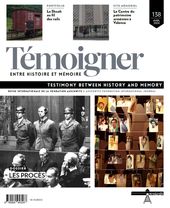
This dossier will deal with trials that have provided a legal answer to a demand for justice. Several cases will be addressed ranging from Istanbul and the Nuremberg Doctors' trial to the German policemen of the Brussels Jewish section and the gacaca trials in Rwanda.
Table of contents (Dutch version)
Table of contents (French version)No. 137 (10/2023) Children's Literature in Light of the Holocaust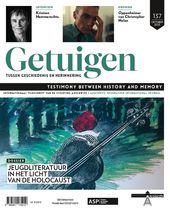
In France and Belgium, research into the relationship between children's literature and the Holocaust is rare, in contrast to the phenomenal attention in America (everyone knows Art Spiegelman's Maus) and in other English-speaking countries. Yet children's books depicting the Holocaust in words and pictures have been steadily gaining ground in post-war France and Belgium. While literary criticism and research still seem to be in their infancy, this dossier will show that critical analysis of this corpus is highly relevant for the future.
Table of contents (Dutch version)
Table of contents (French version)No. 136 (04/2023) The Executioners
The executioner has always fascinated and frightened. The perpetrators of mass crimes are those who carry out, facilitate or order the annihilation of a specific group. Issue 100 of Testimony: Between History and Memory, published in September 2008, examined the Nazi executioners. This dossier offers readers a historical and criminological approach to other genocides of the 20th century.
Table of contents (Dutch version)
Table of contents (French version)No. 135 (10/2022) Disobedience
This issue looks at the concept of disobedience in wartime. While the concept of civil disobedience may seem familiar in these times of endemic protest, there was a time when obedience was the rule. In a military context, disobedience was frequently followed by deadly consequences. This dossier focuses on three cases from the First World War and one from the Algerian War (1954-1962).
Table of contents (Dutch version)
Table of contents (French version)No. 134 (04/2022) The Killing of the ‘Useless’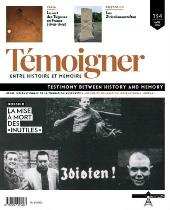
During the Second World War, the Nazi regime didn't just try to destroy the Jewish "race", which it considered dangerous. Before implementing the Final Solution, the Nazis massacred those who didn't fit in with their eugenic racial ideology and whom they considered inferior. In this dossier, we focus on the mentally and physically handicapped, systematic victims of Nazi pseudo-medical madness throughout the world conflict.
Table of contents (Dutch version)
Table of contents (French version)No. 133 (10/2021) 1918-1938: The politicisation of music in Europe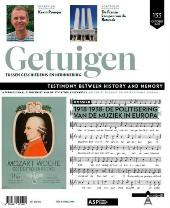
1918-1938: The politicisation of music in Europe
This dossier looks at the instrumentalisation of music by the political world between the wars. The cases are numerous and shed light on the way in which political propaganda was propagated in European musical culture.
Table of contents (Dutch version)
Table of contents (French version)No. 132 (04/2021) AKTION REINHARDT and AKTION ERNTEFEST
AKTION REINHARDT and AKTION ERNTEFEST
The Aktion Reinhardt saw approximately 1.8 million Polish Jews perish in the gas chambers of Bełżec, Sobibór, Treblinka and Majdanek between March 1942 and November 1943. The Jews who ‘escaped’ the gas chambers were shot in Majdanek, Trawniki and Poniatowa on 3 and 4 November 1943 during Aktion Erntefest. The dossier we are proposing takes stock of current research on the Aktion Reinhardt. This historical event has experienced a resurgence of interest among historians of the Shoah over the last fifteen years, thanks, among other things, to archaeological advances at the various sites concerned. We have come a long way since Yithzak Arad's pioneering work in 1987: Belzec, Sobibor, Treblinka: the Operation Reinhard Death Camps. The dossier highlights different perspectives to discuss current research related to the issue. It addresses the erasure of traces, the sociological perspectives of the executioners, the excavation of extermination sites and the most recent historiography.
Table of contents and abstracts (Dutch version)
Table of contents and abstracts (French version)No. 131 (10/2020) Historiography of the Second World War in the Far East
Historiography of the Second World War in the Far East
For many people, 8 May 1945 and the surrender of Nazi Germany is the final chapter of the Second World War. However, it is often forgotten that the months between May and September 1945 were decisive for the future of the world, as fierce fighting continued in the Pacific between the United States and the Japanese Empire until the latter’s unconditional surrender on 2 September 1945, the actual date of the end of the Second World War.Table of contents and abstracts (Dutch version)
Table of contents and abstracts (French version)No. 130 (04/2020) Reception of the Shoah and mentalities in Jewish and Christian circles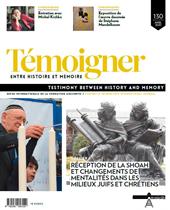
Reception of the Shoah and mentalities in Jewish and Christian circles
The reception of the Shoah has become, for all of humanity, a place of questioning and awareness. This dossier will aim to establish and evaluate the modalities and challenges of the transmission of the Shoah and to measure the resulting changes in identities and mentalities. What were the Catholic views on Judaism before and during the Shoah? What Jewish liturgies and interreligious rites exist for the commemoration of the Shoah in Israel and the United States? The evolution of mentalities in the Jewish world in relation to the Shoah will also be exposed through the analysis of the so-called Bitburg controversy, triggered by the visit of the American President, Ronald Reagan, to the German military cemetery of Bitburg (FRG) in May 1985. The Auschwitz Carmel affair (1985-1993) finally reveals the involvement of the Belgian and French Churches in the resolution of the conflict and is undoubtedly a key stage in the Church's 'teaching of esteem' with regard to the Jews. The historical answers provided in this dossier to the question of the Shoah may be decisive for the survival of Judaism and the relationship between Judaism and Christianity.
Table of contents and abstracts (Dutch version)
Table of contents and abstracts (French version)No. 129 (10/2019) Recognition of victims
Recognition of victims
In recent decades, the idea has gained ground that victims of mass crimes deserve recognition. This has become an essential category of our memorial culture. This dossier aims to take stock of this issue by looking at the broad spectrum of measures to ensure recognition, from simple remembrance to targeted judicial interventions, and by recalling the growing importance of the victim in international criminal justice. It returns to the problematic aspects of recognition when it leads to competition among victims.
Table of contents and abstracts (Dutch version)
Table of contents and abstracts (French version)No. 128 (04/2019) 25 years on, how to remember the Tutsi genocide
Kwibuka [Remember]. 25 years on, how to remember the Tutsi genocide
April 1994. Images of mutilated bodies are projected on European screens, originating from Rwanda. 25 years later, we remember.Table of contents and abstracts (Dutch version)
Table of contents and abstracts (French version)No. 127 (10/2018) Perpetuation of violence after 1918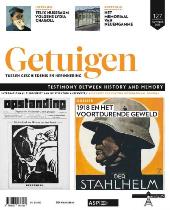
Perpetuation of violence after 1918
One hundred years ago, the First World War ended in November 1918. After four years of bloodshed, peace returns to Europe. At least, that was the impression of the victors at the time, and today it is also the impression of the commemorators who celebrate its centenary. The historical reality is more complex. At least until 1923, violence continued in the form of revolutions and counter-revolutions, wars and civil wars. The spirits also remain in the grip of violence on both the left and the right. The dossier proposes to define the contours of this Europe so strongly marked by the Great War, by evoking the culture of violence established by it and which, finally, degenerated into the total explosion of the Second World War.
No. 126 (04/2018) Questions about the future of remembrance work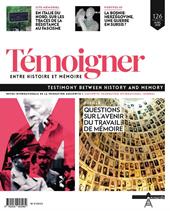
Questions about the future of remembrance work
On 20 and 21 January 2017, the seminar ‘Questions on the future of remembrance work’ was held in Esch-sur-Alzette, Grand Duchy of Luxembourg. The five articles in this dossier taken from the conference proceedings attempt to answer the following questions: How can we build a critical memory of the Shoah, free of myths and national fragmentation? How do we anticipate the absence of direct witnesses? In the future, who transmits what, and how?
No. 125 (10/2017) Persecution of homosexuals by the Nazis
Persecution of homosexuals by the Nazis
Historical knowledge of the Nazi persecution of homosexuals and their deportation has made significant progress in recent years due to the increase in research on the subject. In this dossier, recognised researchers as well as young doctoral and PhD students take the floor. The insights they provide concern both the question of the singular destiny of homosexual men and women during the Second World War and the way in which the memory of the homosexual victims of Nazism has evolved since the end of that war.
No. 124 (04/2017) Music in the camps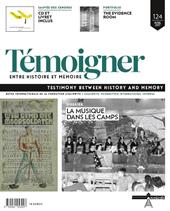
Music in the camps
Music was an integral part of the concentration camp world, Nazi and otherwise. What kind of music was composed and performed, and what exactly was its role in the camps? A factor of survival and resistance for the prisoners, a way for them to express their hope and their humanity - or, on the contrary, an instrument of oppression exploited by the executioners? What is the function of music in the work of memory following the experience of extreme violence and suffering? This dossier proposes to explore these issues.
No. 123 (10/2016) Translating Memory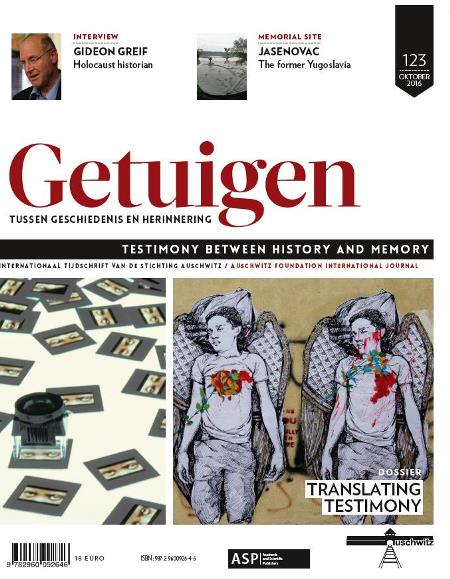
Translating Memory
Presentation of the dossier: What is the relationship between testimony, defined as a more or less ritualized firstperson account of political violence, and translation? Correspondingly, how does the translator position herself towards the witness? Can the translator be, or become, a witness? How, when and why are testimonies translated? Which linguistic and discursive strategies do translators resort to when faced with ethically challenging texts? Which role do they play exactly in the transmission of the historical knowledge, cultural values or social critique conveyed by the testimony? Does translation weaken or rather reinforce the relevance and impact of the original statement? How important is translation in literary, political and institutional settings? Do these specific settings determine translation practice in significant ways? To which extent can subsequent processes of transcription, editing, translation and archiving affect the source text? And how accurate are the boundaries we draw to distinguish witnessing from translating, documentary from literary testimony, the original from its translation? These are the main questions we intend to explore in our dossier.
No. 122 (04/2016) Revisionism and negationism
Revisionism and negationism
Strictly speaking, Holocaust denial is the ‘doctrine denying the reality of the Nazi genocide of the Jews, including the existence of the gas chambers’; by extension, the term refers to the denial of other genocides and crimes against humanity. The literature on Holocaust denial is extensive. There are studies on the subject in many countries as well as biographies of deniers. The argumentative and rhetorical strategies of the deniers have been widely deciphered. Websites systematically dismantle their fallacies. While there is no shortage of reliable information on the phenomenon, it is essential to return to it again and again, for several reasons.
No. 121 (10/2015) Extreme violence on stage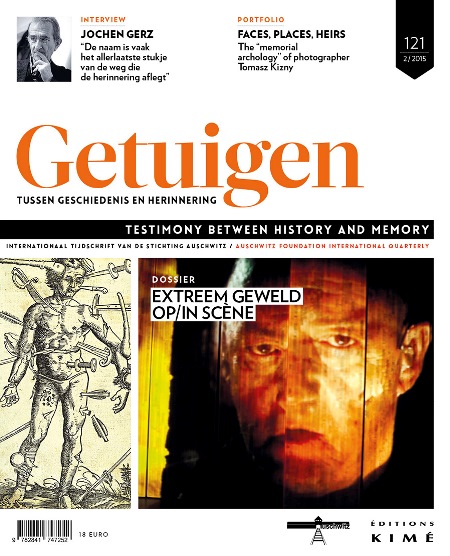
Extreme violence on stage
Extreme violence shows itself. It bursts through the screens. It surfs from one style and medium to another: news reports, documentaries, fiction, arts of all kinds. Yet theatre distinguishes itself from this mêlée all while constantly returning to the subject. Differently. Linked from its origins to the representation of cruelty and having “miraculously” escaped the often sterile polemics on the interdiction (or not)... of representing the Holocaust, it is still with the same youthfulness that theatre deals with extreme violence today, relentlessly pursuing the articulation of ethics and aesthetics.
No. 120 (04/2015) What future is there for the memory of the Armenian genocide?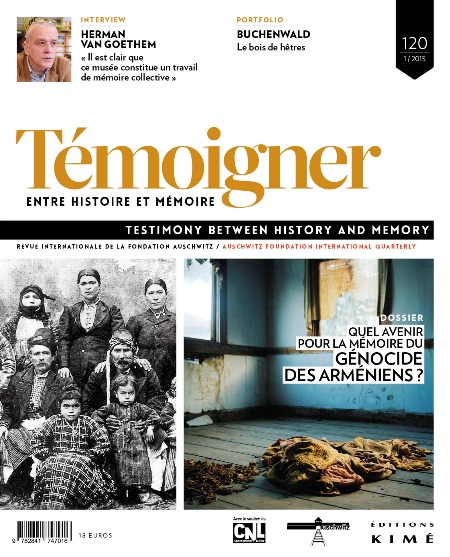
What future is there for the memory of the Armenian genocide?
The 1915 genocide of Turkish Armenians still stirs up numerous debates, controversies, declarations of principle, statements and counter-statements, and even negation. However, as we speak, ties are being established more and more openly, bridges are built and bonds strengthened between the Armenian and Turkish communities. Is reconciliation possible?
No. 119 (12/2014) 70 years ago, Auschwitz. Looking back on Primo Levi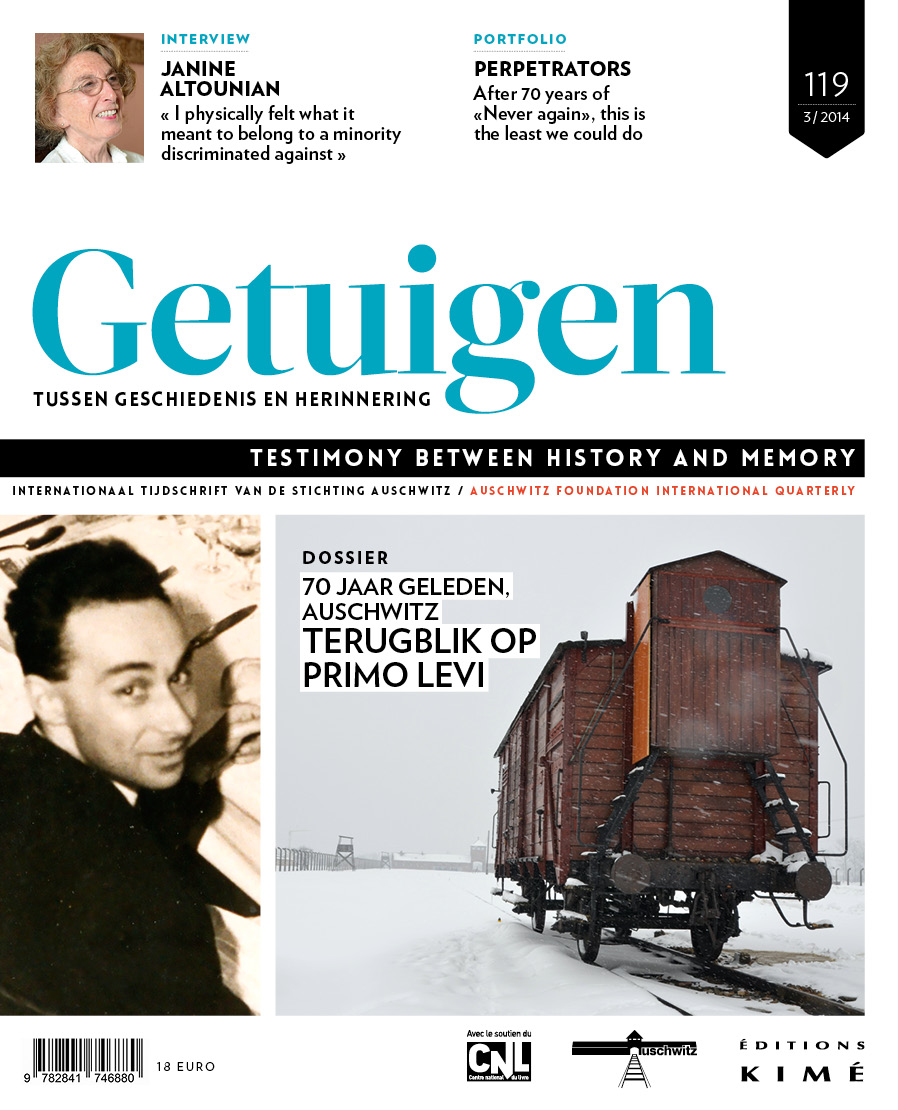
70 years ago, Auschwitz. Looking back on Primo Levi
27 January 1945. Seventy years ago the first soldiers of the Red Army marched into Auschwitz. One might argue that the camp was “liberated” then, but the truth is that neither Auschwitz, nor any of the other Nazi camps, was ever a priority to the Allied Powers. Primo Levi was one of the few survivors who knew how to hide and escape the enforced evacuation of the camps. With this dossier, we want to cast light on the complex figure that Levi was: a Jew, a deportee, a chemists, a witness, and a writer. It sets out to study his oeuvre and his interpretation of the notions of “resistance” and “engagement”, in order to understand how he eventually became a “professional survivor”, as he once described himself.
No. 118 (09/2014) Dictatorship and terror in Argentina, Chile and Uruguay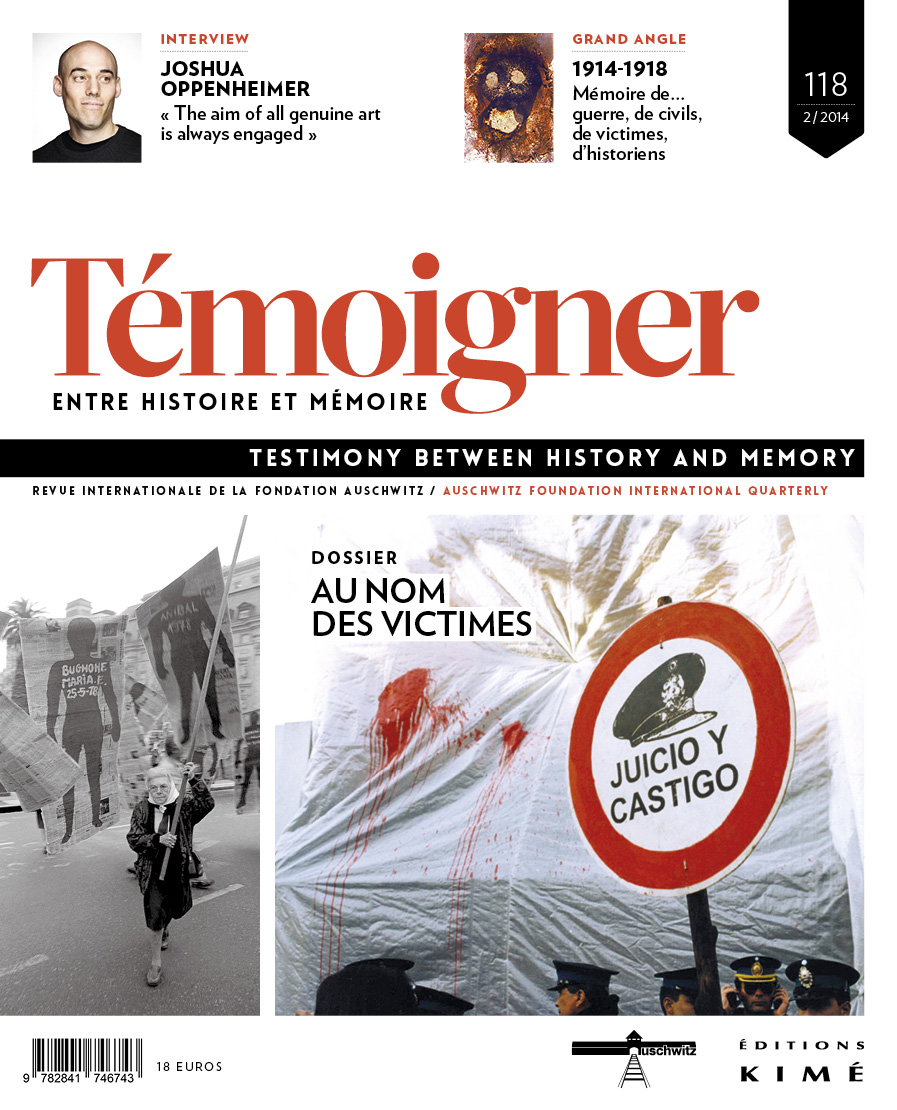
In the name of the victims. Dictatorship and State terror in Argentina, Chile and Uruguay
During the 1970s and 1980s, Argentina, Chile and Uruguay were in the grip of military dictatorships. The process of democratic transition that followed the long period of state terror involved the construction of particular narratives and memories, leading to a reconfiguration of the past. Despite local differences, this process is very much centered at the figure of the victim – a figure the articles in this dossier, collected by Claudia Feld, Luciana Messina and Nadia Tahir, set out to explore.
No. 117 (03/2014) Friends? Enemies? Relationships between memoriesAmis ? Ennemis ? Relations entre mémoires / Vriend of vijand? Hoe herinneringen zich tot elkaar verhouden [Friends? Enemies? Relationships between memories]
Much has been said and written about group memories, limiting their mutual relationships and history to conflicts, “wars”, competitions, or strategies for eclipsing or silencing. These terms have now become the platitudes of a kind of more general doxa about collective and cultural remembrance. This dossier proposes a critical reading of those terms and of that doxa by questioning the emergence, constitution, and inter-relating of different exemplary memories of the major violent episodes of the 20th century. It will address the relationships that those memories can maintain with other memories with which they share, if not the same event, at least similar characteristics and concerns.
No. 116 (09/2013) Memory tripsVoyages mémoriels / Herdenkingsreizen [Memory trips]
Should we fear what has been grouped under the term “memorial tourism”? Or should we take this as a reality of our time? Can any visitor, group or individual, nowadays be absorbed in the category of “tourist”? Or is this category a remote intellectual reduction of a personal experience that everyone is aiming during his visit? The problem appears in a somewhat different light when we think of tours for young people supervised by adults, usually teachers. This dossier gives the floor to historians and teachers with experience in the field.
No. 115 (03/2013) Memory construction in SpainL’Espagne en construction mémorielle / Spanje en de opbouw van de gedachtenis [Memory construction in Spain]
This dossier’s objective is to provide a benchmark for understanding the plural identities and relationships between memories and representation forms in contemporary Spain. Indeed, it is necessary today to take a fresh look not only on the stratified memories of the civil war, exile and the Franco repression, but also on the reception of other memories such as that of the Holocaust, and to propose new readings. We propose to highlight the conflicting or fruitful tensions between official actions, initiatives of associations and of artistic events.
No. 114 (12/2012) Memorial SitesSites mémoriels / Gedenkplaatsen [Memorial Sites]
Memorial sites constitute the concrete trace of European remembrance and history of the twentieth century. But what do they look like today? Exhibition and conservation criteria have changed during the last ten to fifteen years, like advances in historical research have changed the way we read and reconstruct past events. This is not only due to the fact that we have moved from a past history written by witnesses to a history written by professional historians. A new consciousness has emerged concerning transmission methods (memory education), and archeology has strengthened historical research. We tore off the veil of ideology that often influenced and prescribed the way we imagined permanent exhibitions, conservation and visits. Can we say we have entered a new era in memory transmission? It remains, in many ways, an open bet on the present and the future.
No. 113 (09/2012) The Taboos of German HistoryLes tabous de l'histoire allemande / De taboes van de Duitse geschiedenis The Taboos of German History]
The most painful or ambiguous periods in twentieth-century German history are characterized by numerous taboos, expressed in literature, photography and film as so many “returns of the repressed”. These studies focus in part on problems of antisemitism, and thus on the relationship of German-speaking societies to the Shoah. They also examine the way in which those societies confronted the violence they suffered, such as bombing, fleeing from the Red Army and the expulsions, and mass rapes.
No. 112 (06/2012) Children of the Spanish Civil WarLes enfants de la Guerre d'Espagne. Expériences et représentations culturelles / De kinderen van de Spaanse Burgeroorlog. Ervaringen en culturele voorstellingen [Children of the Spanish Civil War: Experiences and Cultural Representations]
The dossier in this issue deals with the experiences and cultural representations of childhood during the Spanish Civil War. It aims to help towards a better understanding of that conflict, which tore apart a population living on the same territory, by confronting the experiences of Spanish children who lived through it – as expressed in various forms during or after the war – with representations of those same children, particularly those coming from adults.
No. 111 (12/ 2011) Dangerous Game between Art and PropagandaArt & propagande : jeux inter-dits / Gevaarlijk spel tussen kunst en propaganda [Dangerous Game between Art and Propaganda]
Since the media came into existence, political institutions from political parties to governments have used them to promote their image, in order to win the support of the public they addressed. Authoritarian powers use the media as a means of consolidating their domination. But how can artists take part in propaganda, whose purposes are the opposite of those generally attributed to art? Does that mean setting aside their vocation, or do they themselves distort that vocation?
No. 110 (10/2011) Displacements, Deportations, ExileDéplacements, déportations, exils / Volksverhuizingen, deportaties, verbanningen [Displacements, Deportations, Exile]
States and criminal groups exploit population displacements to isolate or get rid of certain populations. In addition to being denied their normal rights, these populations lose visibility and are deprived of their reference points and social frameworks. In this way it is possible to make them the victims of constraints (deterritorialization, forced labor…) or violence (famine, massacres genocide…). These developments have spread on an unprecedented scale since the First World War and continue to grow worldwide. But there is also a dimension of remembrance to this reality: memories of these displacements are now being expressed in literature, and in exhibitions and museums. This dossier examines the contemporary double aspect of history and memory.
No. 109 (03/ 2011) 20th Century Wars and Genocides in Graphic Novels and Comic StripsLa bande dessinée dans l'orbe des guerres et des génocides du XXe siècle / Twintigste-eeuwse oorlogen en genociden in het stripverhaal [Twentieth Century Wars and Genocides as Portrayed in Graphic Novels and Comic Strips]
No. 108 (09/2010) How Documentaries Handle HistoryLe traitement de l'histoire dans les documentaires filmiques / De behandeling van de geschiedenis in de documentaire film [How Documentaries Handle History]
No. 104 (09/2009) Anti-fascism Revisited: History, Ideology, RemembranceL'Antifascisme revisité. Histoire – Idéologie – Mémoire / Nogmaals antifascisme. Geschiedenis, ideologie, gedachtenis [Anti-fascism Revisited: History, Ideology, Remembrance]
No. 103 (06/ 2009) Nazi Crimes and Genocides on the ScreenCrimes et génocides nazis à l'écran / Nazimisdaden en genociden op het scherm [Nazi Crimes and Genocides on the Screen]
No. 102 (03/ 2009) The Portrayal of Political Criminals in Films, Plays, Literature...Criminels politiques en représentation. Arts, cinéma, théâtre, littérature, médias / De representatie van politieke misdadigers. Kunst, film, theater, literatuur, media [The Portrayal of Political Criminals in Films and Plays, in Literature and in the Media]
No. 101 (12/2008) How to Educate, How to Remember?Quelle pédagogie, pour quelle(s) mémoire(s) ? / Welke pedagogie, voor welke herinnering(en)? [How to Educate, How to Remember?]
No. 100 (09/2008) Questions about the “Executioners”Questions de « bourreaux » / De kwestie van de “beul” [Questions about the “Executioners”]
Contact
Auschwitz Foundation – Remembrance of Auschwitz
Rue aux Laines 17 box 50 – B-1000 Brussels +32 (0)2 512 79 98
+32 (0)2 512 79 98 info@auschwitz.be
info@auschwitz.be
BCE/KBO Auschwitz Foundation: 0876787354
BCE/KBO Remembrance of Auschwitz: 0420667323
Office open from Monday to Friday 9:30am to 4:30pm.
Visit only by appointment.![]()
![]()
![]()
![]()
Become a member
To become a member of Remembrance of Auschwitz ASBL, take part in its activities and support its actions, please contact us.
Membership costs €40.00, payable to account n° 310-0780517-44 (IBAN : BE55 3100 7805 1744 – BIC : BBRUBEBB)
Donations of more than €40.00 qualify for a tax exemption for Belgian tax-payers.








































